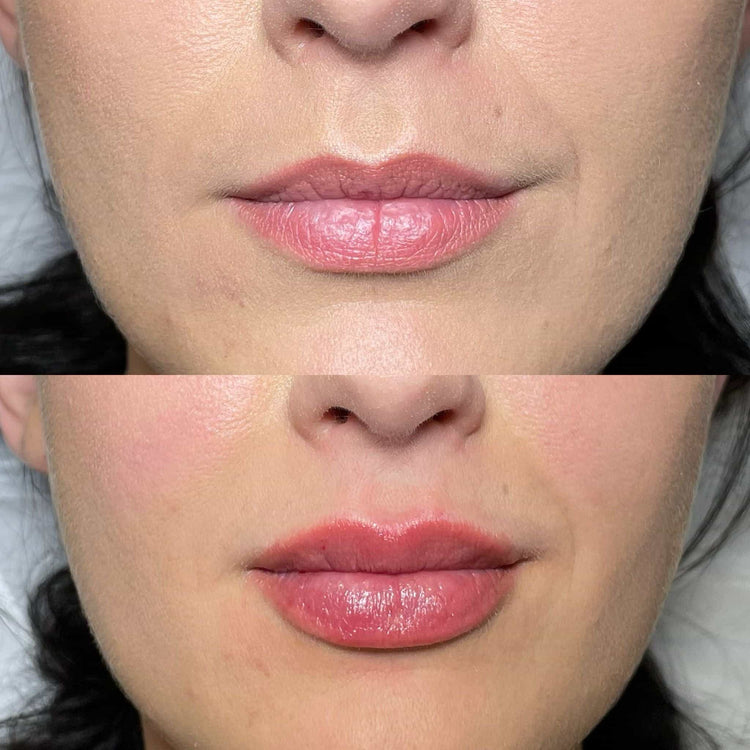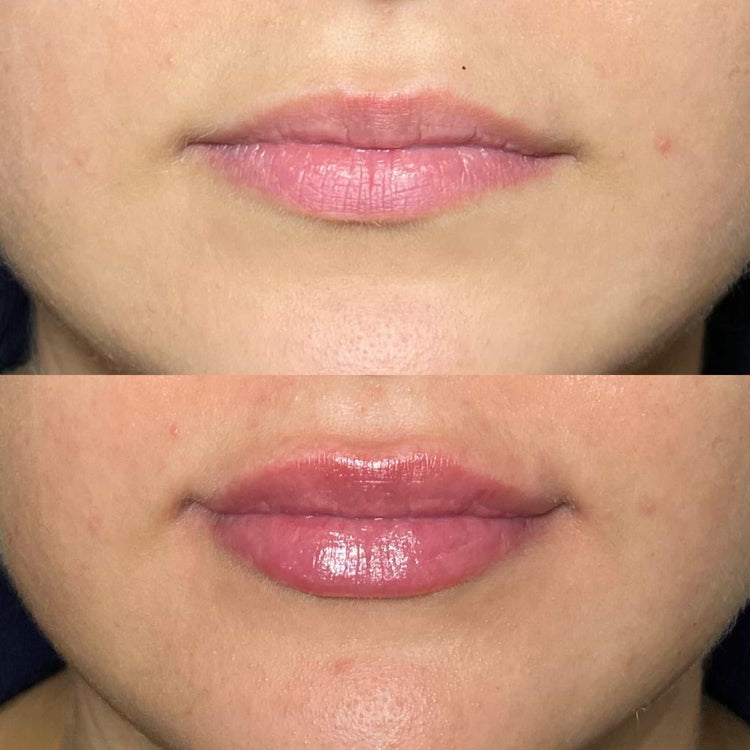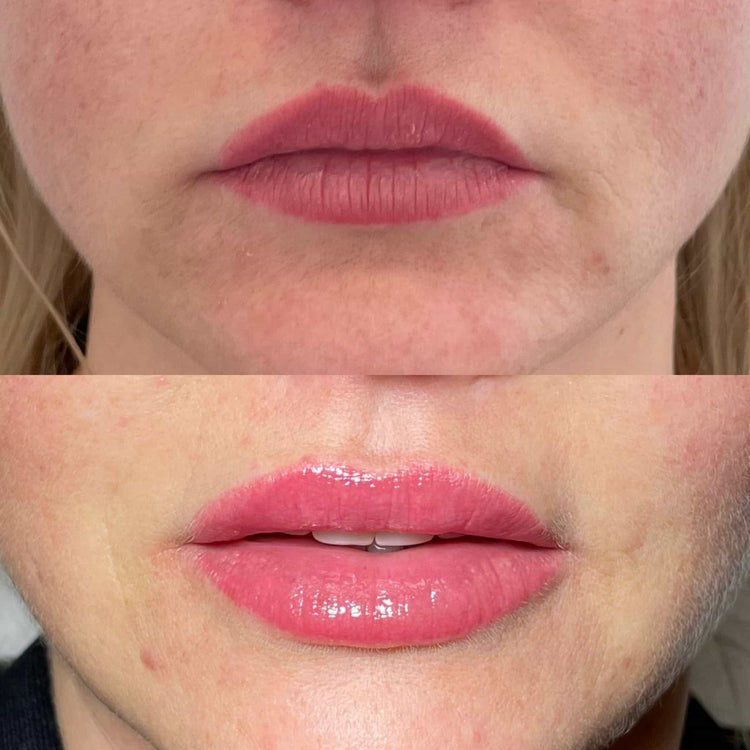Types of Lip Filler Ingredients
Lip fillers have become increasingly popular in recent years, offering individuals a way to enhance their lip shape and volume. However, potential allergens within these injections raise concerns for those with sensitivities. Understanding the different types of ingredients used in lip fillers is crucial for individuals considering this cosmetic procedure.
Hyaluronic Acid Fillers
Lip fillers have become increasingly popular, offering individuals a way to enhance their lip shape and volume. However, potential allergens within these injections raise concerns for those with sensitivities.
One of the most common types of lip filler ingredients is hyaluronic acid. Hyaluronic acid is a naturally occurring substance in the body that helps retain moisture.
- Hyaluronic acid fillers are generally considered safe for most people, as they are biocompatible and biodegradable.
- They typically cause minimal side effects, such as swelling, redness, or bruising, which usually subside within a few days.
However, individuals with allergies to hyaluronic acid or other components of lip fillers should consult with their doctor before undergoing the procedure.
Collagen Fillers
Collagen fillers are another type of lip filler that was once popular but has largely been replaced by hyaluronic acid fillers. Collagen is a protein naturally found in the body and provides structure to skin, tendons, ligaments, and cartilage.
Collagen fillers were derived from animal sources, such as cows or pigs.
Due to the risk of allergic reactions to these animal-derived products, collagen fillers are less commonly used today.
PMMA (Polymethylmethacrylate) Fillers
PMMA (Polymethylmethacrylate) fillers are a type of permanent lip filler that has been used for many years.
- PMMA is a synthetic plastic polymer that is injected into the lips to add volume and shape.
- Unlike hyaluronic acid fillers, PMMA fillers do not dissolve naturally in the body.
- Because of this permanence, and due to potential complications such as granuloma formation and migration of the filler, PMMA fillers are less commonly used today.
Allergic Reactions to Lip Fillers
Lip fillers have surged in popularity, offering individuals a path to enhance their lip shape and volume. However, the presence of potential allergens within these injections raises concerns for those with sensitivities.
Symptoms of Allergic Reactions
Allergic reactions to lip fillers can occur, though they are relatively uncommon. Symptoms of an allergic reaction can range from mild to severe and may include swelling, redness, itching, hives, difficulty breathing, and in rare cases, anaphylaxis.
If you experience any concerning symptoms after receiving a lip filler, it is essential to seek medical attention immediately.
Immediate vs. Delayed Reactions
Allergic reactions to lip fillers can occur, though they are relatively uncommon. Symptoms of an allergic reaction can range from mild to severe and may include swelling, redness, itching, hives, difficulty breathing, and in rare cases, anaphylaxis.
Allergic reactions can be immediate or delayed.
- Immediate allergic reactions occur soon after the injection and typically manifest within minutes to hours.
- Delayed allergic reactions may take days or even weeks to appear.
If you experience any concerning symptoms after receiving a lip filler, it is essential to seek medical attention immediately.
Severity of Allergic Reactions
Allergic reactions to lip fillers can occur, though they are relatively uncommon. Symptoms of an allergic reaction can range from mild to severe and may include swelling, redness, itching, hives, difficulty breathing, and in rare cases, anaphylaxis.
Immediate allergic reactions occur soon after the injection and typically manifest within minutes to hours. Delayed allergic reactions may take days or even weeks to appear.
Identifying Potential Allergens in Fillers
The increasing popularity of lip fillers raises important questions about safety, particularly for individuals with allergies. Understanding the potential allergens present in these injections is crucial for making informed decisions about cosmetic procedures.
Ingredient Lists and Labeling Requirements
Lip fillers have become increasingly popular, offering individuals a way to enhance their lip shape and volume. However, potential allergens within these injections raise concerns for those with sensitivities.
One of the most common types of lip filler ingredients is hyaluronic acid. Hyaluronic acid is a naturally occurring substance in the body that helps retain moisture.
- Hyaluronic acid fillers are generally considered safe for most people, as they are biocompatible and biodegradable.
- They typically cause minimal side effects, such as swelling, redness, or bruising, which usually subside within a few days.
However, individuals with allergies to hyaluronic acid or other components of lip fillers should consult with their doctor before undergoing the procedure.
Collagen fillers are another type of lip filler that was once popular but has largely been replaced by hyaluronic acid fillers. Collagen is a protein naturally found in the body and provides structure to skin, tendons, ligaments, and cartilage.
Collagen fillers were derived from animal sources, such as cows or pigs.
Due to the risk of allergic reactions to these animal-derived products, collagen fillers are less commonly used today.
PMMA (Polymethylmethacrylate) fillers are a type of permanent lip filler that has been used for many years.
- PMMA is a synthetic plastic polymer that is injected into the lips to add volume and shape.
- Unlike hyaluronic acid fillers, PMMA fillers do not dissolve naturally in the body.
- Because of this permanence, and due to potential complications such as granuloma formation and migration of the filler, PMMA fillers are less commonly used today.
The increasing popularity of lip fillers raises important questions about safety, particularly for individuals with allergies. Understanding the potential allergens present in these injections is crucial for making informed decisions about cosmetic procedures.
Allergic reactions to lip fillers can occur, though they are relatively uncommon. Symptoms of an allergic reaction can range from mild to severe and may include swelling, redness, itching, hives, difficulty breathing, and in rare cases, anaphylaxis.
If you experience any concerning symptoms after receiving a lip filler, it is essential to seek medical attention immediately.
Allergic reactions can be immediate or delayed.
- Immediate allergic reactions occur soon after the injection and typically manifest within minutes to hours.
- Delayed allergic reactions may take days or even weeks to appear.
Patch Testing for Allergies
Identifying potential allergens in lip fillers is crucial for individuals with sensitivities. Hyaluronic acid, a common filler ingredient, is generally safe but allergies can occur. Collagen fillers, derived from animal sources, carry a higher risk of allergic reactions and are less commonly used today.
Patch testing is a valuable tool for identifying specific allergens before undergoing a lip filler procedure. In patch testing, small amounts of potential allergens are applied to the skin, allowing for observation of any reactions over a period of days.
If an allergic reaction occurs during patch testing, it indicates a sensitivity to that particular ingredient and should be avoided.
Minimizing Risks and Managing Allergies
Lip fillers have become increasingly popular, offering individuals a way to enhance their lip shape and volume. However, potential allergens within these injections raise concerns for those with sensitivities. Understanding the different types of ingredients used in lip fillers is crucial for individuals considering this cosmetic procedure.
Consultation with a Qualified Practitioner
Lip fillers have surged in popularity, offering individuals a path to enhance their lip shape and volume. However, the presence of potential allergens within these injections raises concerns for those with sensitivities.
Understanding the potential allergens present in these injections is crucial for making informed decisions about cosmetic procedures.
Allergic reactions to lip fillers can occur, though they are relatively uncommon. Symptoms of an allergic reaction can range from mild to severe and may include swelling, redness, itching, hives, difficulty breathing, and in rare cases, anaphylaxis.
If you experience any concerning symptoms after receiving a lip filler, it is essential to seek medical attention immediately.
Allergic reactions can be immediate or delayed. Immediate allergic reactions occur soon after the injection and typically manifest within minutes to hours. Delayed allergic reactions may take days or even weeks to appear.
If you have concerns about potential allergies or sensitivities, consulting a qualified medical practitioner specializing in cosmetic procedures is essential. They can assess your medical history, perform any necessary tests, and advise you on the best course of action.
A doctor can also discuss alternative options for lip enhancement that may be more suitable if you have allergies.
Allergy History Disclosure

Lip fillers have become increasingly popular, offering individuals a way to enhance their lip shape and volume. However, potential allergens within these injections raise concerns for those with sensitivities. Understanding the different types of ingredients used in lip fillers is crucial for individuals considering this cosmetic procedure.
One of the most common types of lip filler ingredients is hyaluronic acid. Hyaluronic acid is a naturally occurring substance in the body that helps retain moisture. Hyaluronic acid fillers are generally considered safe for most people, as they are biocompatible and biodegradable. They typically cause minimal side effects, such as swelling, redness, or bruising, which usually subside within a few days.
However, individuals with allergies to hyaluronic acid or other components of lip fillers should consult with their doctor before undergoing the procedure.
Collagen fillers are another type of lip filler that was once popular but has largely been replaced by hyaluronic acid fillers. Collagen is a protein naturally found in the body and provides structure to skin, tendons, ligaments, and cartilage. Collagen fillers were derived from animal sources, such as cows or pigs. Due to the risk of allergic reactions to these animal-derived products, collagen fillers are less commonly used today.

PMMA (Polymethylmethacrylate) fillers are a type of permanent lip filler that has been used for many years. PMMA is a synthetic plastic polymer that is injected into the lips to add volume and shape. Unlike hyaluronic acid fillers, PMMA fillers do not dissolve naturally in the body. Because of this permanence, and due to potential complications such as granuloma formation and migration of the filler, PMMA fillers are less commonly used today.
Allergic reactions to lip fillers can occur, though they are relatively uncommon. Symptoms of an allergic reaction can range from mild to severe and may include swelling, redness, itching, hives, difficulty breathing, and in rare cases, anaphylaxis. If you experience any concerning symptoms after receiving a lip filler, it is essential to seek medical attention immediately.
Allergic reactions can be immediate or delayed. Immediate allergic reactions occur soon after the injection and typically manifest within minutes to hours. Delayed allergic reactions may take days or even weeks to appear. Identifying potential allergens in lip fillers is crucial for individuals with sensitivities.
Patch testing is a valuable tool for identifying specific allergens before undergoing a lip filler procedure. In patch testing, small amounts of potential allergens are applied to the skin, allowing for observation of any reactions over a period of days.
If an allergic reaction occurs during patch testing, it indicates a sensitivity to that particular ingredient and should be avoided.
If you have concerns about potential allergies or sensitivities, consulting a qualified medical practitioner specializing in cosmetic procedures is essential. They can assess your medical history, perform any necessary tests, and advise you on the best course of action. A doctor can also discuss alternative options for lip enhancement that may be more suitable if you have allergies.
Alternative Filler Options
Lip fillers have surged in popularity, offering individuals a path to enhance their lip shape and volume. However, the presence of potential allergens within these injections raises concerns for those with sensitivities. Understanding the different types of ingredients used in lip fillers is crucial for making informed decisions about cosmetic procedures.
One common type of filler ingredient is hyaluronic acid. This substance is naturally found in the body and helps retain moisture. Hyaluronic acid fillers are generally considered safe, being biocompatible and biodegradable. They typically cause mild side effects, like swelling or redness, which usually subside quickly. However, individuals with allergies to hyaluronic acid or other filler components should consult a doctor before proceeding.
Collagen was once a popular filler but has largely been replaced by hyaluronic acid. It’s a protein found in the body that provides structure to various tissues. However, collagen fillers were derived from animals, increasing the risk of allergic reactions. Today, they are less commonly used.
PMMA (Polymethylmethacrylate) is another type of filler but it’s permanent and not dissolvable. While it can add volume and shape, it carries risks like granuloma formation and migration of the filler, leading to its decreased usage today.
Allergic reactions to lip fillers, though relatively uncommon, can range from mild to severe. They can include swelling, redness, itching, hives, difficulty breathing, or in rare cases, anaphylaxis. Immediate reactions occur soon after injection, while delayed reactions may take days or even weeks.
If you experience any concerning symptoms, seek medical attention immediately.
Identifying potential allergens is vital for those with sensitivities. Patch testing can be helpful to determine specific allergies before a procedure. Small amounts of potential allergens are applied to the skin, allowing for observation over several days.
If you have concerns about allergies or sensitivities, consulting a qualified medical practitioner specializing in cosmetic procedures is essential. They can assess your medical history, perform necessary tests, and advise on the best course of action. They can also discuss alternative lip enhancement options that might be more suitable if you have allergies.
Aftercare and Monitoring
Understanding potential allergens in lip fillers is crucial for those with sensitivities. Hyaluronic acid, a common ingredient, is generally safe but allergies can occur. Collagen fillers, derived from animal sources, carry a higher risk of allergic reactions and are less commonly used today.
Patch testing is a valuable tool for identifying specific allergens before undergoing a lip filler procedure. Small amounts of potential allergens are applied to the skin, allowing for observation of any reactions over a period of days.
If an allergic reaction occurs during patch testing, it indicates a sensitivity to that particular ingredient and should be avoided.
If you have concerns about potential allergies or sensitivities, consulting a qualified medical practitioner specializing in cosmetic procedures is essential. They can assess your medical history, perform any necessary tests, and advise you on the best course of action.
A doctor can also discuss alternative options for lip enhancement that may be more suitable if you have allergies.
Instructions for Aftercare Procedures
Aftercare instructions are crucial to ensure proper healing and minimize potential complications after receiving lip fillers.
Avoid touching or picking at your lips:
Allow your lips to heal undisturbed.
Apply cold compresses:
Use a cold compress for 10-15 minutes at a time to reduce swelling and bruising.

Stay hydrated:
Drink plenty of water to help keep your skin hydrated and promote healing.
Avoid sun exposure:
Protect your lips from the sun by wearing sunscreen with an SPF of 30 or higher.
Refrain from strenuous activity:
Give your body time to recover by avoiding intense exercise for a few days.
Do not use makeup on your lips:
Allow the treated area to breathe and avoid irritating it with cosmetics.
Follow your doctor’s instructions carefully:
Your doctor will provide specific aftercare recommendations based on your individual needs and the type of filler used.
If you experience any unusual symptoms, such as excessive pain, swelling, redness, or discharge, contact your doctor immediately.
Recognizing Signs of Complications
Aftercare instructions are crucial for ensuring proper healing and minimizing potential complications after receiving lip fillers. These guidelines help optimize the results of your treatment and promote a smooth recovery process.
Here are some key aftercare tips:
- Avoid touching or picking at your lips: Allow your lips to heal undisturbed.
- Apply cold compresses: Use a cold compress for 10-15 minutes at a time to reduce swelling and bruising.
- Stay hydrated: Drink plenty of water to help keep your skin hydrated and promote healing.
- Avoid sun exposure: Protect your lips from the sun by wearing sunscreen with an SPF of 30 or higher.
- Refrain from strenuous activity: Give your body time to recover by avoiding intense exercise for a few days.
- Do not use makeup on your lips: Allow the treated area to breathe and avoid irritating it with cosmetics.
- Follow your doctor’s instructions carefully: Your doctor will provide specific aftercare recommendations based on your individual needs and the type of filler used.
Be observant of any unusual symptoms, such as excessive pain, swelling, redness, or discharge, after receiving lip fillers. If you experience any of these signs, contact your doctor immediately.
Follow-up Appointments
Aftercare is essential for the success and safety of lip filler procedures. Following your doctor’s instructions carefully will help minimize risks and ensure optimal healing. Here are some key points to keep in mind:
* **Avoid touching or picking at your lips:** This can introduce bacteria and interfere with the healing process.
* **Apply cold compresses:** Reducing swelling is important after any injection, so applying a cold compress for 10-15 minutes at a time can help.
* **Stay hydrated:** Drinking plenty of water helps keep skin hydrated and supports overall healing.
* **Avoid sun exposure:** Protect your lips from the sun with an SPF 30 or higher sunscreen, as sun exposure can irritate treated areas and affect healing.
* **Refrain from strenuous activity:** Allow your body time to recover by avoiding intense exercise for a few days after treatment.
* **Do not use makeup on your lips:** Give your lips a chance to breathe and avoid irritation from cosmetics while they are healing.
Be sure to follow up with your doctor as instructed. This will allow them to monitor your progress, address any concerns, and ensure the best possible outcome.
Get your dream lips with Dr. Laura Geige’s lip injections at It’s Me & You Clinic
- Skin Pen Microneedling Near Stoke D’Abernon, Surrey - November 17, 2025
- Skin Pen Microneedling Near Elstead, Surrey - November 16, 2025
- Skin Injectables Near Selhurst, Surrey - November 13, 2025

